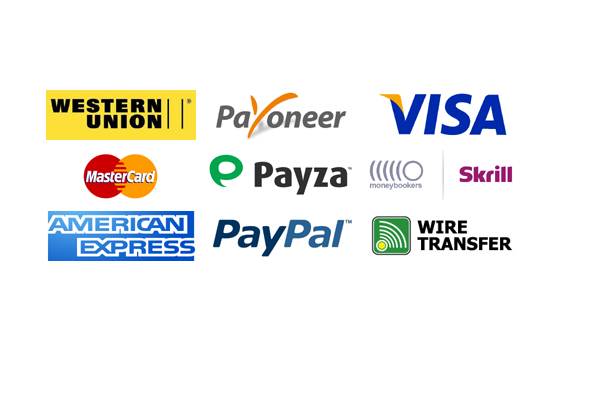As a small business owner, it’s vital that you have an efficient way of receiving payments online or in person. While receiving cash is always an option without having to pay credit card processing fees, it’s important that small businesses accept multiple payment options. Today, only about 36% of customers consistently have cash on them; for the 55% of small businesses that do not accept credit card payment options, this can be detrimental to their business.
And it looks like this shift away from cash will only increase with the onset of the COVID-19 pandemic. In fact, in a recent study, 60% of respondents believed that the United States is on its way to becoming a completely cashless nation.
With these trends in mind, we created this guide to explore the different payment options available to small business owners in an effort to keep your cash flow remaining high.
Accepting Payments from Customers
It’s growing ever more important for small businesses to accept more payment options than cash. In the past, accepting major credit cards or online payments may have been difficult for small business owners because of the steep fees it took to process the payments, but today’s technology has made it easier to attain. In fact, nearly 50% of consumers navigate to large e-commerce platforms to make purchases, so offering multiple payment options is almost essential to keep your business afloat.
Whether you’re running an online store or have your own small service business, below we’ll take a closer look at five different options you want to consider when accepting payments:
- Credit cards and debit cards
- American Clearing House (ACH) payment processing
- Recurring billing or subscriptions
- Online payment devices and tools
- Contactless payment
1. Credit Cards and Debit Cards
Whether online or in person, two of the most desired forms of payment are credit and debit cards. In fact, 75% of customers say they prefer using debit or credit cards to make payments. Even though making credit card payments as a customer is a simple process, there are a few things to keep in mind when choosing which ones you’ll accept as a small business owner.
Two of the first things you’ll want to consider are the credit card payment processing fees and transaction fees coming directly from the card company. Visa, for instance, is on the lower end while American Express typically ranges on the higher end. You can find a more detailed breakdown here.
Another thing you’ll want to think about is potential fraud. Since small business owners are more focused on running a business they are passionate about, many choose to outsource the job of checking for fraud to credit card payment processing companies, which is also where the differences in fees come into play.
Ultimately, the best way for your small business to accept card payments depends on your business’s needs and the number of credit card transactions that your business processes monthly. Once you make this decision, you’ll need to look into some of the tools below to actually accept the payments:
- Point-of-Sale (POS) Software: This is a payment system that charges the customer, provides the option to tip, collects emails, tracks purchases, manages receipts, etc. Oftentimes, Point-of-Sale software can have payment gateways, which is a protected way for customers to pay for services or products from their online shopping cart.
- Virtual Terminal: For small businesses that do not want to purchase a card terminal or card reader, you can use a virtual terminal to type the credit card number into a computer or mobile device during checkout.
- Card Reader: Many small businesses choose this option because they can attach the card reader to their smartphone, or have a mounted swipe/chip/tap card terminal to read the customer’s card.
Apply for a credit card today
Pick the card that’s right for your business.
2. Automated Clearing House Processing
Many small businesses also accept ACH transfers. This type of payment sends money from one bank account to another electronically through the Automated Clearing House (ACH) Network. Over 10,000 financial institutions are represented by this network, which acts as a hub for individuals to transfer money from one bank account to another.
For small businesses using ACH processing, some benefits include:
- Relatively quick and convenient way to make and accept payments
- Easy setup with the customer’s bank account information
- More secure than other payment forms like paper checks
Even though there are many benefits to ACH processing, there are some drawbacks. To begin, many banks have transaction limits that could impact the number of transactions that they will process in a given day or month. Additionally, frequent transfers could result in a penalty. That being said, transaction rates are either free or very low — usually somewhere between $0.25 to $0.75 for every transaction.
3. Recurring Billing or Subscriptions
Another payment option is to offer recurring billing or subscriptions, and there are plenty of platforms out there to help you automate payments. Recurring billing software removes some of the hassle related to getting on-time payments.
Before you can set up automatic billing, though, you will need to get approval from the customer and set a payment schedule. Once you have approval from your customer, you are ready to set up subscription-based billing. Below is a list of steps that you should take for developing a recurring billing system for your small business:
- Get your customer payment information (either a credit card or bank account) along with consent from the customer that they will be enrolled in a recurring billing cycle.
- Choose a billing system that works for your business. Software like Stripe offers an intuitive interface for managing and accepting payments. This software combines a payment gateway and recurring billing software into one so card payments can be processed.
- Set up a pricing plan within the billing software and make a schedule for how often and how much customers will be charged.
- Test your billing system before sending it out to customers, ensuring that you sound professional when sending out your first recurring bill.
4. Online Payment Devices and Tools
As a small business owner, you have several great options for online payment devices and tools. For people who sell goods or services online, it’s incredibly important to have a trusted e-commerce payment service. Online payment services accept debit and credit card payments and usually charge a fee to accept these payments.
Three of the most popular payment tools include PayPal, Stripe, and Square. In this next section, we’ll introduce these online payment tools and the fees associated with them.
PayPal
PayPal makes it easy to accept credit and debit card payments online. Whether you need to accept payments online or in-store, PayPal has options. Using PayPal online, in person, or for mobile payments makes the buying process straightforward to customers. While in person, you can turn your tablet or smartphone into a payment center so you can accept payments virtually anywhere.
When you first sign up for PayPal, you will not have to pay any setup fees. However, there are transaction fees. Online transaction fees are 2.9% plus $0.30 for every transaction, while in-store transactions are 2.7% plus $0.30 for every transaction. One of the benefits of using PayPal is that although you pay a transaction fee, you do not have any monthly fees.
Stripe
Stripe allows small business owners to accept payments online or in person through one software. Whether you conduct business domestically or internationally, Stripe processes payments throughout the globe. By using this software, you can efficiently manage payments and rest assured that your business is protected from fraud with Stripe Radar.
Stripe is particularly great for small businesses that plan to expand into the global market because it allows you to accept multiple methods of payment. Allowing for multiple payment methods means that your business can expand to other countries that use different payment methods (e.g., France or Mexico).
With Stripe’s “Integrated” plan, you can expect to pay a fee of 2.9% plus $0.30 per successful transaction. This plan provides businesses with the basic tools needed to manage payments without any setup or hidden fees.
Square
Square offers various payment solutions, such as credit card payments, for small business owners. To begin, they offer Square Point of Sale, which is a POS software that can be used in-store or online via your mobile device. Additionally, they offer various easy-to-use hardware options, which further simplify transactions. These accessories and hardware include Contactless and Chip, Register, Terminal, Reader, and Stand. Using Square allows you to manage your business online on a highly intuitive platform.
5. Contactless Payment
Depending on the payment software that you choose, your customers may be able to pay using a contactless tool. Using near-field communication (NFC) technology, contactless options like Apple Pay and Google Pay allow users to simply wave their smartphone or smartwatch in front of a designated device as a payment method. Ultimately, this speeds up the purchasing process for the customer and is more secure than other payment methods.
To get started, you will need to invest in an NFC-enabled reader to offer a contactless payment option. This can be fairly easy depending on how you already accept other payments. Affordable Square, for instance, offers a $49 contactless payment tool, which has a transaction fee of 2.6% plus $0.10 per transaction.
The More Payment Options, the More Customers
As our society moves further away from using cash for everyday purchases, it’s even more important that your business offers alternative payment methods. Without adapting to your customer’s needs, you are potentially missing out on more sales. Luckily, there are several options for your business, no matter your needs.
If you need help growing your small business, ZenBusiness can help. We’re dedicated to helping small business owners grow their dream business by providing expert services and educational resources.
Read & Write : write for us
 Lifeyet News Lifeyet News
Lifeyet News Lifeyet News





